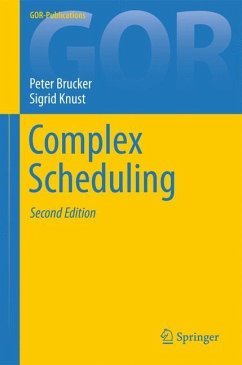
Decision Analysis, Location Models, and Scheduling Problems
Versandkostenfrei!
Versandfertig in 1-2 Wochen
115,99 €
inkl. MwSt.
Weitere Ausgaben:

PAYBACK Punkte
58 °P sammeln!
The book presents a unified treatment of decision analysis, location theory and scheduling, with topics ranging from multicriteria decision-making, multiattribute utility theory, classical decision analysis and game theory, to location and layout planning, and to project and machine scheduling. While the emphasis of the book is on models and applications, the most important methods and algorithms, exact as well as heuristic, are described in detail and illustrated by numerical examples. The formulations and the discussion of a large variety of models provide insight into their structures, allowing the user to better evaluate the solutions to the problems.
The purpose of this book is to provide readers with an introduction to the fields of decision making, location analysis, and project and machine scheduling. The combination of these topics is not an accident: decision analysis can be used to investigate decision seenarios in general, location analysis is one of the prime examples of decision making on the strategic Ievel, project scheduling is typically concemed with decision making on the tactical Ievel, and machine scheduling deals with decision making on the operational Ievel. Some of the chapters were originally contributed by different authors, and we have made every attempt to unify the notation, style, and, most importantly, the Ievel of the exposition. Similar to our book on Integer Programming and Network Models (Eiselt and Sandblom, 2000), the emphasis of this volume is on models rather than solution methods. This is particularly important in a book that purports to promote the science of decision making. As such, advanced undergraduate and graduate students, as weil as practitioners, will find this volume beneficial. While different authors prefer different degrees of mathematical sophistication, we have made every possible attempt to unify the approaches, provide clear explanations, and make this volume accessible to as many readers as possible.














